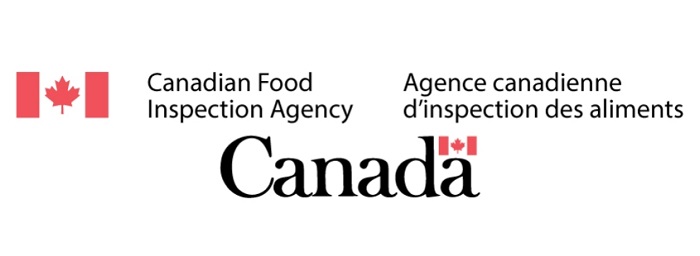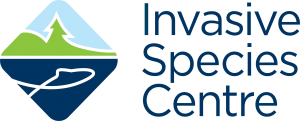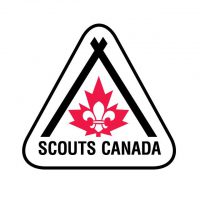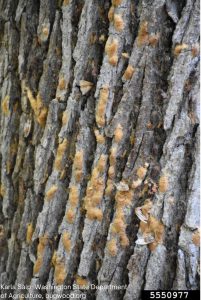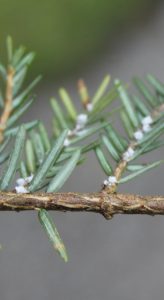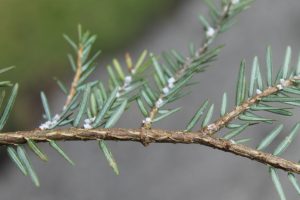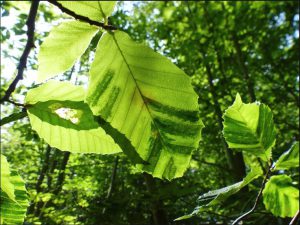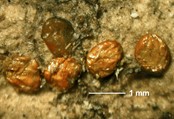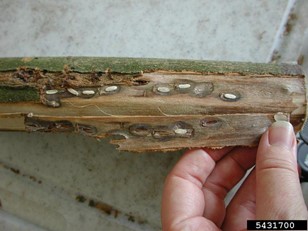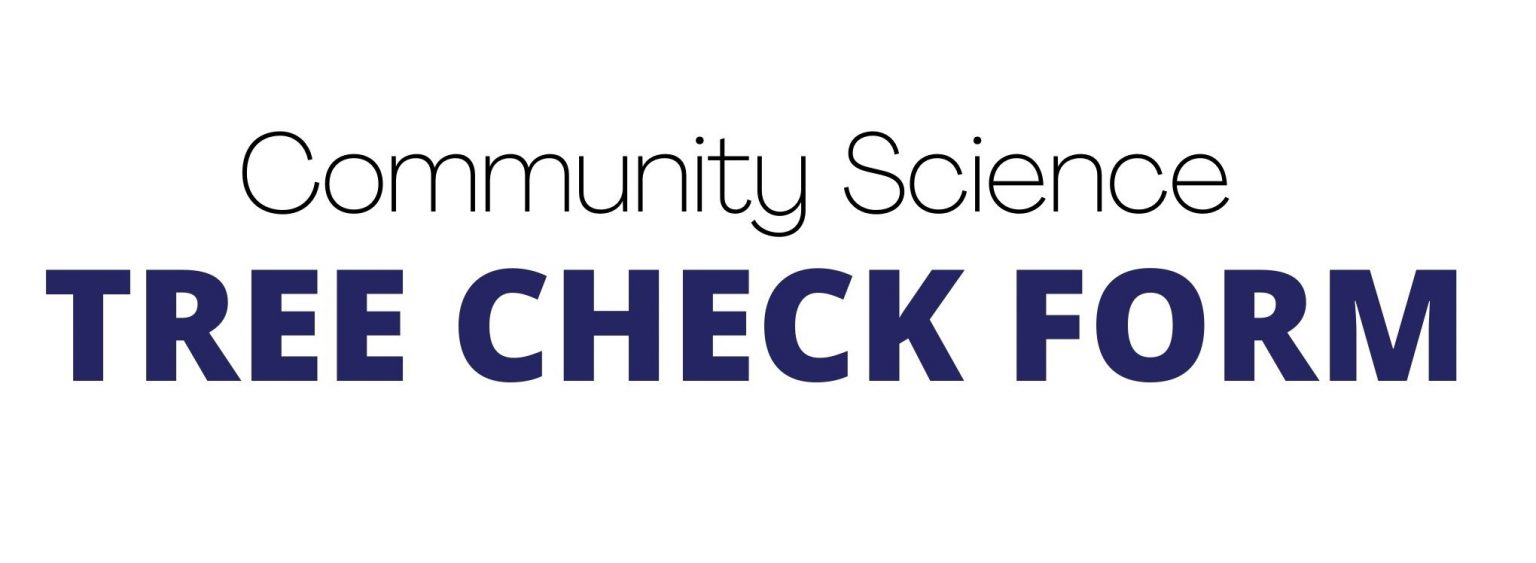
Canada’s valued forests and urban areas are threatened by invasive forest insects and pathogens that impact these ecosystems, the economy, and society, including human health. Prevention, detection, and monitoring strategies, including outreach and community monitoring programs, provide high return-on-investment when managing invasive species.
The goal of this project is to empower Canadians with the knowledge and tools to monitor the health of their trees, and increase priority pest surveillance efforts in the Province of Ontario through community data collection.
Public reports help create a better understanding of the status of invasive species in Canada, both where species are present as well as areas they are not currently found.
How to Use the Tree Check Form
The tree check form provides a simple guide for what to look for when you are surveying trees in your community. Each survey has room for up to three reports, each of which can be used for a different type of tree. If you are only reporting one species of tree (oak, for example), please leave all other report sections blank. If you are unsure of what species you are surveying, provide your best guess and a photo.
When surveying your tree(s) try to be as thorough as possible, checking all components of the tree that are accessible (E.g. trunk, branches, crown, leaves, and roots). Invasive species often start their infestation at the top of the tree moving downwards, so make sure to inspect the crown for discolouration, or branch dieback. Ensure to look past the tree(s) and record the environment around them as well.
Reporting both healthy and unhealthy trees are important and provide valuable information. Do your best when filling out the tree check form and when in doubt, snap a photo and upload it to the tree check form for expert analysis.
Printable Form
Need help identifying the trees you’re surveying? Click here to see an online identification guide.
Common Signs of Invasive Species
Signs of invasive forest pests and pathogens can show in various severities depending on the level of damage and species present. Common signs and symptoms of invasive pests to look for on trees are:
- Leaf discolouration
- Branch dieback
- Evidence of exit holes, cracks, or peeling bark
- Increased woodpecker activity
- Presence of egg masses
- Frass (sawdust/wood shavings)
- Mould growth
- Sap running from tree
- Evidence of feeding activity on the leaves
- Noticeable insect population on tree (e.g., caterpillars, aphids, etc.)
Here are some photo examples of what to look out for:
Spongy Moth
Photo credit: Karla Salp, Washington State Department of Agriculture, bugwood.org
Hemlock Woolly Adelgid
Oak Wilt
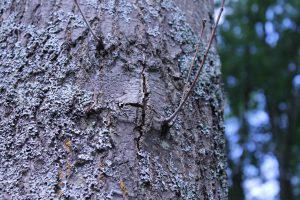
Large cracks and irregularities in the bark can be a sign of pathogens or larval activity. (Oak wilt pressure pads)
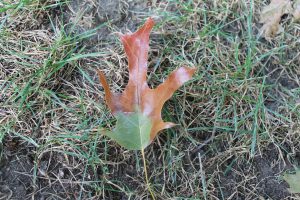
Premature leaf discolouration. (Oak wilt leaf damage)
Emerald Ash Borer
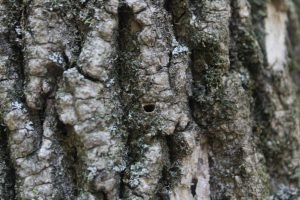
Insects exit holes can range from 3 – 19 mm large depending on the insect. (Emerald ash borer exit hole)
Beech Leaf Disease
Early-stage beech leaf disease
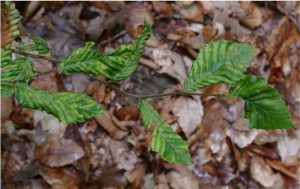
Photo credit: Ohio Dept. of Natural Resources
Late-stage beech leaf disease
Box Tree Moth
Infested plants are disfigured by the loss of leaves and by the webbing spun by the larvae. Younger larvae feed by eating the lower surfaces of the leaves only, leaving the upper epidermis intact. Older larvae feed inside the webbing and skeletonize the leaves, leaving only the midribs, and occasionally the outer margin intact. (Reference)
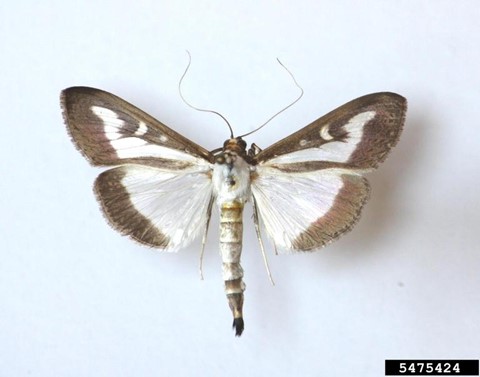
Photo credit: Szabolcs Sáfián, University of West Hungary, Bugwood.org
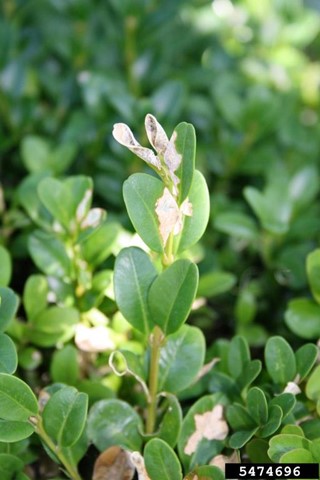
Photo credit: Ferenc Lakatos, University of Sopron, Bugwood.org
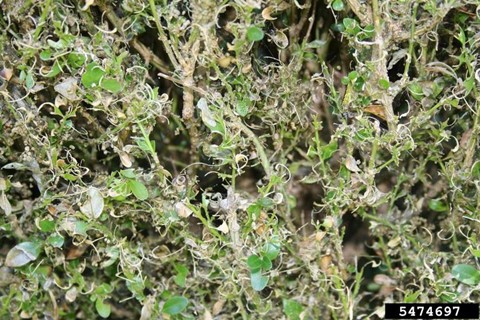
Photo credit: Ferenc Lakatos, University of Sopron, Bugwood.org
Priority pests to watch out for
NEW! Report the health of your boxwoods using the Tree Check Form
- Asian longhorned beetle
- Hemlock woolly adelgid
- Oak wilt
- Spotted lanternfly
- Box tree moth
- Beech leaf disease
Survey Outdoor Areas for Egg Masses!
Many invasive insects lay egg masses on the underside of exterior hard surfaces, including railings, fences, door frames, house siding, trailers, lawn furniture, camping equipment or rock and wood piles etc.
Here are some photo examples of what to look out for:
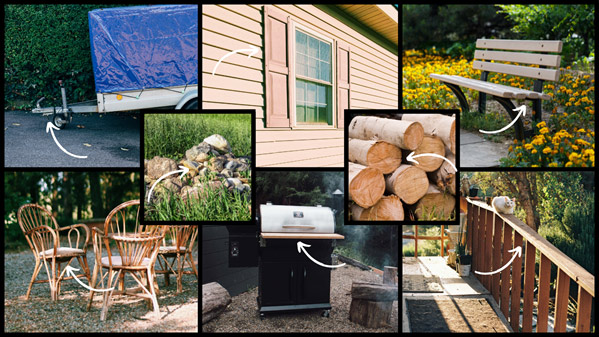
Most egg masses can be removed using a scraping tool like a butter knife and dropped into soapy water. Always wear personal protective equipment (i.e. goggles and gloves) and take caution when removing from higher branches.
Spotted Lanternfly
Eggs are laid on hard surfaces in groupings of straight lines with 30-50 eggs per mass. They are covered in a shiny, putty-like (mud-like) grey secretion that dulls and cracks over the winter.
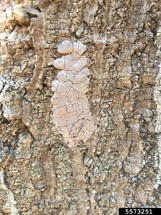
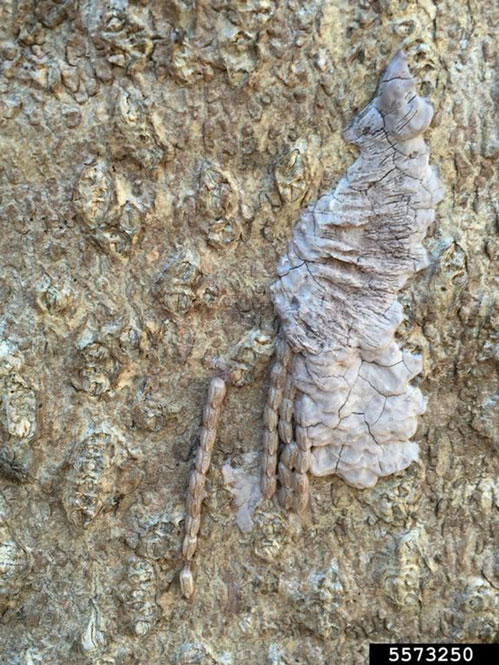
Photo credit: Emelie Swackhamer, Penn State University, Bugwood.org
If SLF egg masses are detected in Canada, take a picture, then scrape them into a sealable container and immediately notify the Canadian Food Inspection Agency (CFIA). Dispose of them in your household garbage.
Spongy Moth
Egg masses are covered with spongey looking, tan coloured hairs or fuzz, eventually becoming sun bleached with age. Egg masses are approximately 30 to 60 mm long, 20 to 30 mm wide and may contain 100 to 1000 eggs. Spent egg masses have pin sized holes caused by emerging larvae.
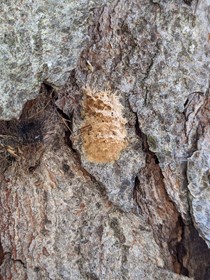
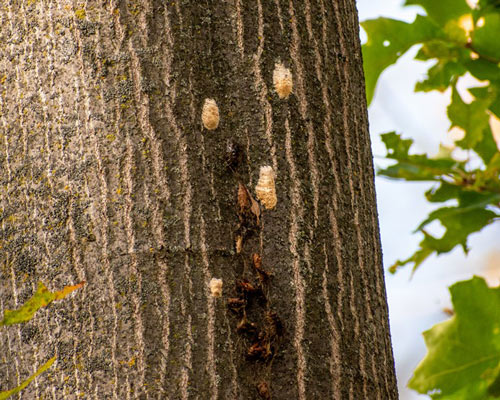
If Spongy Moth egg masses are detected, scrape the masses off of the hard surface they are affixed to, and destroy them immediately by crushing the eggs or by submerging the eggs into a bucket filled with water and household bleach or soap for at least two days. After two days, discard the solution and egg mixture.
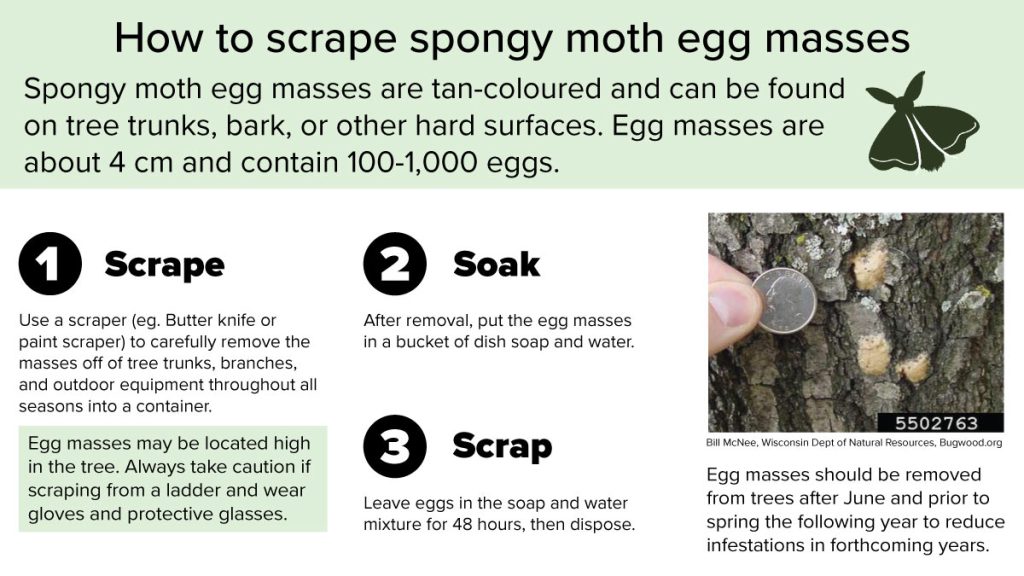
Hemlock Woolly Adelgid:
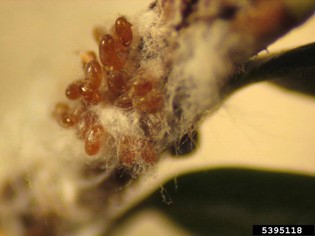
Photo credit: Shimat Joseph, University of Georgia, Bugwood.org
Emerald Ash Borer:
Importance of surveying and submitting the health status of your trees
Invasive species are a persistent threat that need to be monitored continuously, the more eyes on the ground monitoring for early signs and symptoms of pest activity, the better! By continuously surveying the health status of your property and community trees, you are contributing to the defence against invasive forest pests. Continued monitoring is essential in ensuring invasive species do not move into your communities undetected.
Continuous community reporting of tree health is vital to understanding the health status of Canadian forests, which is vital to making informed decisions when developing management strategies. By submitting to the tree check form, you are helping supplement the CFIA’s forest monitoring efforts and ensure a broader understanding of forest health in Canada.
Disclaimer:
This project is run is collaboration with the Canadian Food Inspection Agency (CFIA). Under the Plant Protection Act, any report of a species under quarantine significance will be followed up by the CFIA. By completing the form you agree that should a species of quarantine significance be reported in your tree check form, CFIA has the authority to contact you or visit the site for inspection.
